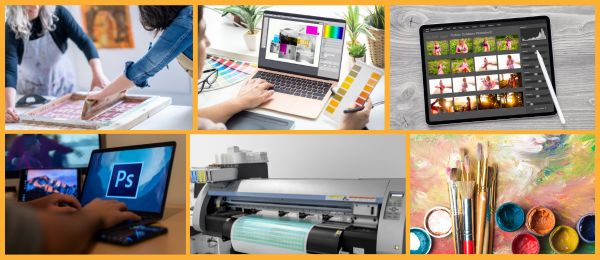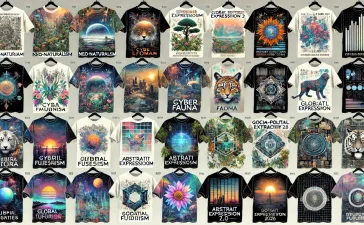Surface design is a dynamic realm where creativity meets technology, and the choice of tools plays a pivotal role in transforming artistic visions into tangible expressions. From traditional hand-drawn techniques to cutting-edge digital platforms, the arsenal of tools available to surface designers has evolved dramatically. In this comprehensive guide, we’ll explore the diverse array of tools, software, and equipment that form the backbone of the contemporary surface design landscape.
Traditional Tools:
- Pencils and Sketchpads: The timeless combination of pencils and sketchpads remains a fundamental starting point for many surface designers. Whether creating initial concepts, intricate patterns, or freehand illustrations, these analog tools allow for the organic exploration of ideas.
- Paints and Brushes: Traditional painting techniques still hold their charm. Acrylics, watercolours, and gouache, paired with an array of brushes, provide a hands-on approach that adds texture and depth to designs. These tools are particularly popular for creating bespoke, artisanal pieces.
- Ink and Pen: The precision and fine detailing achievable with ink and pen make them indispensable tools for illustrators and artists who specialize in intricate line work. The contrast between bold strokes and delicate lines adds a unique aesthetic to surface designs.
Digital Tools:
- Graphic Tablets: Bridging the gap between traditional and digital, graphic tablets allow designers to draw directly onto a screen with a stylus, offering precision and control. Tablets from brands like Wacom and Huion have become staples for those transitioning to digital workflows.
- Design Software: The digital landscape is rich with software tailored for surface designers. Adobe Creative Cloud, including Photoshop and Illustrator, is an industry standard, offering versatile tools for editing, creating vector graphics, and experimenting with different effects.
- 3D Modeling Software: For designers venturing into three-dimensional creations, software like Blender and Rhino facilitates the development of intricate patterns, textures, and structures. These tools are invaluable for those working in product design, fashion, and interiors.
- CAD Programs: Computer-Aided Design (CAD) programs like AutoCAD and SolidWorks are essential for professionals designing patterns for textiles, wallpaper, and other surfaces. They enable precise measurements and seamless integration with manufacturing processes.
Printing and Textile Tools:
- Screen Printing Equipment: Screen printing remains a popular method for transferring designs onto fabrics, paper, and other surfaces. Artists can experiment with colors and textures, making each print unique.
- Digital Printers: Advancements in digital printing technology have revolutionized surface design. High-quality digital printers, such as those by Epson and HP, allow for intricate, full-colour patterns to be reproduced on various materials.
- Looms and Textile Machinery: For textile designers, looms and textile machinery are indispensable tools. These enable the creation of woven patterns and fabric constructions, opening up a vast array of possibilities for textile-based surface designs.
Collaborative and Organization Tools:
- Collaboration Platforms: Surface designers often collaborate with manufacturers, clients, and fellow artists. Tools like Slack, Trello, and Asana facilitate seamless communication, file sharing, and project management.
- Colour Matching Systems: Achieving accurate colour representation is crucial in surface design. Systems like Pantone provide standardized colour matching, ensuring consistency across various materials and production processes.
- Portfolio Platforms: Websites and platforms like Behance, Dribbble, and Adobe Portfolio allow designers to showcase their work, connect with potential clients, and stay updated on industry trends.
In conclusion, the world of surface design is characterized by its diversity, and the tools employed by designers reflect this rich tapestry. Whether wielding traditional brushes or navigating digital realms, the right tools empower artists to bring their creative visions to life, shaping the visual landscapes that surround us. As technology continues to evolve, the toolbox of the surface designer expands, offering new possibilities and avenues for innovation.
Want to learn more?
- Find out more
- Launch Pad + Accelerator Expressions of Interest
- Selling and Licensing Your Art & Designs Around the World with ArtSHINE.
We’re here to help you to take action, just like we’ve helped thousands of other entrepreneurs, business owners, and creative professionals all around the globe.
Now is the time to let your passion SHINE.
Now is the time to Make Tomorrow Today!
To your success, Vinh Van Lam and Stuart Horrex Cofounders
ArtSHINE.com





